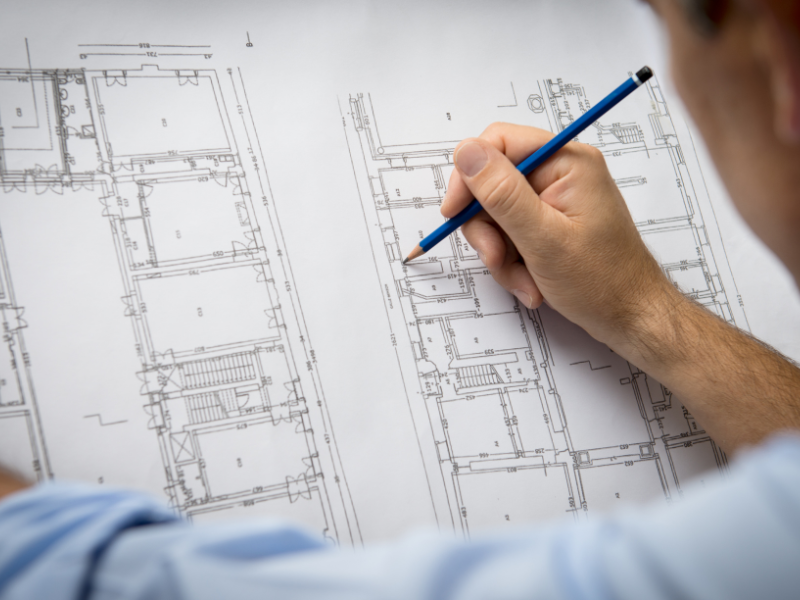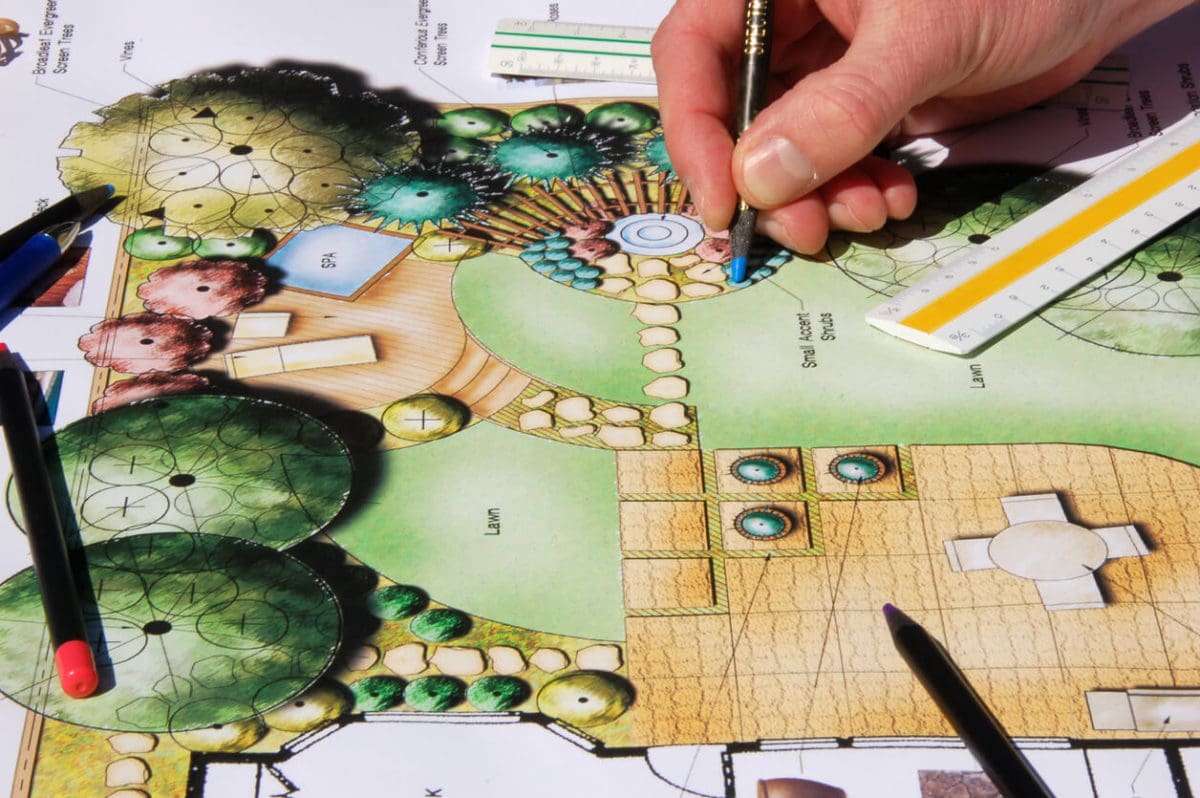Architect Rules for Designing Timeless Interiors
Architect Rules for Designing Timeless Interiors
Blog Article
Comprehending the Diverse Occupation Paths Available for Aspiring Architect
As an ambitious Architect, you have a globe of occupation courses waiting on you. Each course uses one-of-a-kind obstacles and possibilities to use your creativity and technical knowledge. Whether you're attracted to typical architecture or the nuances of sustainable style, there's a niche that lines up with your rate of interests. Comprehending these varied alternatives can shape your expert trip, yet which direction will you choose to check out initially?
Conventional Architecture: Creating Frameworks and buildings
Traditional style focuses on developing structures and frameworks that mix capability with aesthetic appeal. Your layouts can mirror social heritage, showcasing regional practices while meeting contemporary demands.
You'll develop abilities in drafting, model-making, and website analysis, enabling you to imagine and communicate your concepts effectively. Involving with clients, you'll require to understand their vision and translate it into practical layouts.
Additionally, developing codes and sustainability techniques are vital in your job, ensuring your structures are eco pleasant and secure. As you expand in your career, you'll find possibilities in domestic, industrial, and even reconstruction tasks, each offering unique challenges. Embracing traditional architecture leads the way for a fulfilling profession that admires the past while shaping the future.
Urban Planning: Shaping Neighborhoods and Public Spaces
As a hopeful Architect, you can play a crucial role as an urban planner, changing just how neighborhoods work and communicate. By employing area involvement approaches, you'll assure that homeowners have a voice in forming their setting. Plus, integrating sustainable layout concepts will certainly assist create spaces that not only fulfill today's demands however likewise secure the future.
Role of Urban Planners
While lots of could think of architects as the sole enthusiasts behind structures, urban planners play an important role in shaping the wider landscape of areas and public rooms. By collaborating with different stakeholders, you'll assist make parks, transportation systems, and domestic areas that promote social communication and access. Your knowledge in spatial style and neighborhood characteristics permits you to picture future development while preserving cultural heritage.
Community Involvement Techniques
Reliable neighborhood involvement techniques are essential for urban coordinators to assure that the voices of locals are listened to and valued in the preparation procedure. To foster significant discussion, you should prioritize open discussion forums and workshops where community members can reveal their concepts and problems. By actively including and listening comments, you'll develop spaces that show the neighborhood's demands, ultimately leading to more sustainable and successful metropolitan settings.
Lasting Design Principles
When creating metropolitan rooms, including lasting design concepts is important for producing atmospheres that grow both ecologically and socially. You should start by focusing on energy efficiency, using materials that decrease waste and promote recycling. Think about integrating eco-friendly areas, like parks and yards, to improve biodiversity and enhance air high quality. Promoting walkability and public transport can reduce dependence on cars and trucks, promoting a healthier community.
Designing with water preservation in mind is likewise essential-- consider rain yards and absorptive surfaces to handle stormwater. Including community participants throughout the preparation process guarantees that the rooms you produce meet their demands and motivate social interaction. By welcoming these principles, you'll contribute to dynamic, lasting urban landscapes that profit every person.

Landscape Architecture: Producing Lasting Outdoor Atmospheres
As you discover landscape architecture, you'll discover necessary design principles that produce attractive and functional exterior spaces. Sustainable practices play a crucial duty in making sure these settings thrive while decreasing ecological influence. And also, you'll discover a variety of job possibilities that enable you to make a genuine distinction in exactly how individuals engage with nature.
Layout Concepts in Landscape
Comprehending layout principles in landscape style is crucial for producing sustainable outside environments that balance with nature. You'll need to consider elements like balance, proportion, and range to guarantee your designs really feel natural and inviting. Furthermore, pay interest to seasonal changes, developing with products that complement the surroundings year-round.
Lasting Practices Review
Lasting methods in landscape architecture not just concentrate on visual appeals but also prioritize ecological wellness and source conservation. You can make areas that promote dirt wellness, such as using natural materials and practicing permaculture concepts. Inevitably, these practices assure your styles profit both people and the atmosphere for years to come.
Career Opportunities Exploration
With a solid foundation in lasting techniques, landscape design supplies a variety of occupation paths that enable you to make a significant effect on the environment. You might function as a landscape designer, producing cosmetically pleasing and functional outside rooms, or specialize in eco-friendly remediation, aiding to restore broken environments. Urban organizers typically team up with landscape architects to produce environment-friendly spaces in metropolitan setups, enhancing city livability. If you're passionate regarding education and learning, think about becoming a landscape design educator, inspiring future generations. In addition, you could work with nonprofits concentrated on environmental sustainability or engage in research study to introduce brand-new methods. Each course not just shapes gorgeous environments however also fosters a healthier planet for future generations.
Sustainable Layout: Concentrating On Eco-Friendly Practices
As you discover your job in style, embracing green techniques can set you apart in a competitive area. Sustainable style focuses on creating structures that reduce ecological effect while improving passenger well-being. By including sustainable materials, energy-efficient systems, and lasting building methods, you'll contribute to a greener future.
Begin by obtaining knowledge of environment-friendly accreditations like LEED or BREEAM, which can reinforce your qualifications. Consider just how natural light, ventilation, and thermal performance can enhance layout. Collaborate with designers and environmental experts to introduce services that lower waste and save sources.
Do not forget the value of area involvement-- appealing neighborhood stakeholders can inspire designs that harmonize with the setting. As clients progressively focus on sustainability, your expertise in environmentally friendly practices will not only bring in tasks yet additionally meet your passion for responsible design. Welcome this essential element of the profession, and watch your profession grow.
Historical Preservation: Safeguarding and Bring Back Cultural Heritage
While you begin on your building trip, take into consideration the important role of historic preservation in keeping our social heritage. This field concentrates on the protection and reconstruction of significant buildings, sites, and structures that tell the stories of our past. By participating in historical conservation, you'll aid guard the architectural tradition that shapes neighborhood identification.
As a historical preservation Architect, you'll evaluate historical significance and evaluate the condition of frameworks. You'll work very closely with conservationists and historians to assure authentic reconstruction strategies are used. This career course allows you to mix imagination with research, view website enabling you to make services that value original products and craftsmanship.
Your job not just contributes to sustainability by reusing existing structures but likewise cultivates a sense of pride within neighborhoods. Embracing this path will certainly aid you become a guardian of background, preserving the stories and visual appeals that enhance our lives.
Inside Design: Enhancing Indoor Spaces
Historical conservation and interior architecture both share a commitment to improving the built environment, however they concentrate on various facets. While historic preservation emphasizes preserving a structure's historical and cultural value, interior design absolutely nos in on maximizing interior spaces for functionality and aesthetic appeals.
As an aspiring Architect, you'll find that indoor style permits you to blend creativity with technical abilities. You'll design rooms that not just look good but additionally advertise convenience and effectiveness. This area includes comprehending exactly how light, color, and materials engage within an area, impacting mood and use.
You'll work with numerous tasks, from household homes to industrial offices, guaranteeing that each environment meets the demands of its owners. By prioritizing user experience, you can transform insides right into inspiring and practical rooms, making a considerable effect on just how individuals engage with their surroundings. Welcome the possibility to improve indoor settings and shape the means people function and live.
Industrial Layout: Combining Performance With Looks
Commercial design plays a crucial function in producing products that perfectly mix visual appeals with performance, ensuring that what you use day-to-day is not only visually enticing yet likewise sensible. As an aspiring Architect, you can immerse yourself in this area, concentrating on developing every little thing from furnishings to consumer electronic devices. Your job entails comprehending customer needs, products, and producing procedures, allowing you to produce cutting-edge options that enhance everyday experiences.
In industrial layout, you'll typically team up with engineers, marketing professionals, and suppliers, ensuring that your layouts are not only gorgeous yet additionally practical. This occupation path supplies a vibrant atmosphere where creativity satisfies practicality, making it a gratifying selection for architects interested in shaping the products of tomorrow.
Regularly Asked Inquiries
What Educational Certifications Do I Need to End Up Being an Engineer?
To come to be a designer, you'll need a professional degree in design, generally a Bachelor's or Master's. Furthermore, you'll have to complete a teaching fellowship and pass the Architect Enrollment Exam to practice lawfully.
Exist Accreditation Requirements for Various Architectural Job Paths?
Yes, there're certification requirements for various building paths. Architect. You'll require to pass exams, full teaching fellowships, and sometimes seek specialized training, relying on your picked focus, like landscape architecture, city layout, or historic conservation
What Software Application Skills Are Essential for Engineers Today?

How Can I Gain Practical Experience While Examining Architecture?
You can get practical experience by interning at architectural companies, participating in layout competitors, volunteering for community jobs, or browse around this web-site collaborating with schoolmates on real-world jobs. These possibilities boost your skills and construct beneficial connections in the market.
What Task Opportunities Exist Outside Typical Architecture Firms?
You can discover various task possibilities outside conventional architecture companies, like metropolitan planning, indoor style, landscape architecture, building and construction monitoring, property advancement, or perhaps functions in sustainability consulting. Each deals unique difficulties and incentives.
Whether you're drawn to traditional architecture or the subtleties of sustainable layout, there's a niche that aligns with your rate of interests.When creating urban spaces, incorporating lasting style principles is critical for developing settings that thrive both ecologically and socially.As you discover landscape anchor style, you'll find essential design concepts that produce functional and stunning outdoor spaces.Comprehending design principles in landscape architecture is essential for producing sustainable exterior settings that harmonize with nature.In industrial style, you'll often work together with suppliers, marketers, and designers, making certain that your designs are not only lovely but also possible.
Report this page